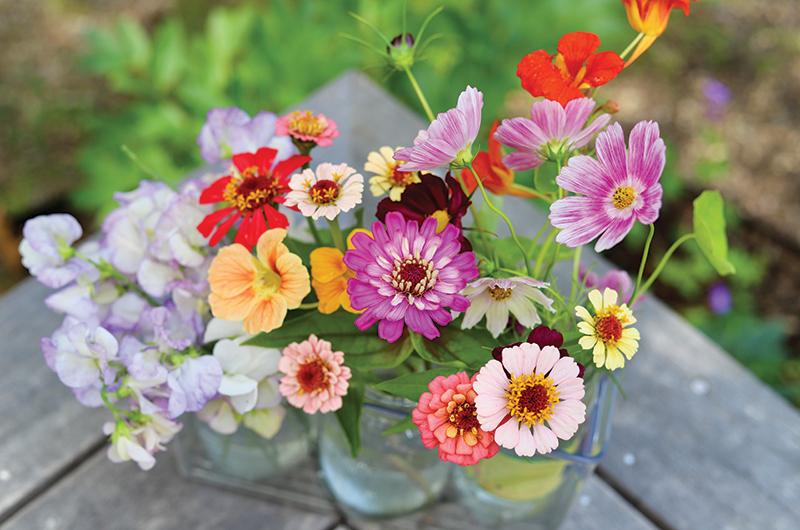Growing cut flowers alongside your vegetable garden not only provides an extra harvest, but it also attracts beneficial insects and butterflies, creating a more vibrant ecosystem. Best of all, it allows you to share the beauty of fresh flowers with friends who may not have a garden of their own.
At GrowVeg, we’ve recently updated our plant guides to include a variety of cut flowers like dahlias, gladiolus, and others, allowing you to incorporate them into your Garden Planner. You can even integrate roses into mixed beds of herbs and flowers designed for bouquets.
Choosing Cut Flowers to Grow
When selecting flowers to grow for bouquets, focus on a mix of different shapes and types. Many weeds, grasses, shrubs, and even trees can provide interesting foliage or flowers for arrangements. However, for the best results, choose a combination of feature flowers, fillers, and spiky varieties. A well-rounded bouquet typically includes flat flowers (like daisies), tubular flowers (such as lilies or gladiolus), and spiky ones (such as sages, celosia, or Thai basil).
Roses are a classic choice, particularly reblooming varieties like the ‘Pink Knockout’ rose, which is disease-resistant and slightly fragrant. While hybrid tea roses may offer larger blooms, they are often more temperamental. In pest-prone seasons, like when Japanese beetles are abundant, you can protect your roses by covering them with a tulle net, allowing the plant to rebloom in the fall once the beetles are gone.

Dahlias are another fantastic option, thriving in sunny spots even in cooler climates when planted in large containers. These warm-weather plants produce stunning blooms, with smaller flowers like yellow, peach, pink, or white being the most versatile for bouquets. Choose single-flowered varieties, as they are more attractive to pollinators.
In addition to dahlias, annuals like ageratum, zinnias, cosmos, and snapdragons are excellent choices for cutting. You can experiment with different combinations each season—try mixing celosia, calendulas, and black-eyed Susans for a striking display. Even short-lived flowers like daylilies and poppies can be worth picking for their short yet breathtaking beauty.

The Practical Side of Growing Cut Flowers
Growing cut flowers in a dedicated row or bed is a traditional but effective approach. Many cut flowers require support as they grow, especially as they become top-heavy with blooms. You can use a variety of supports, from simple wire trellises to tomato cages or circles of chicken wire. Providing sturdy support early on can prevent the need for frequent re-staking of plants like cosmos, gladiolus, sunflowers, and zinnias.
Additionally, cut flowers can attract pests like ants, aphids, and thrips. To reduce these, spray the plants with water before cutting to dislodge any hidden insects. Alternatively, dunk the flowers in cool water, shake off the excess, and allow them to dry upright in a cool, shady area. This process ensures that your flowers are pest-free and ready to brighten your home.

By choosing the right flowers and providing proper care and support, you can create a beautiful and functional flower garden that not only enhances your space but also shares its beauty with others.
